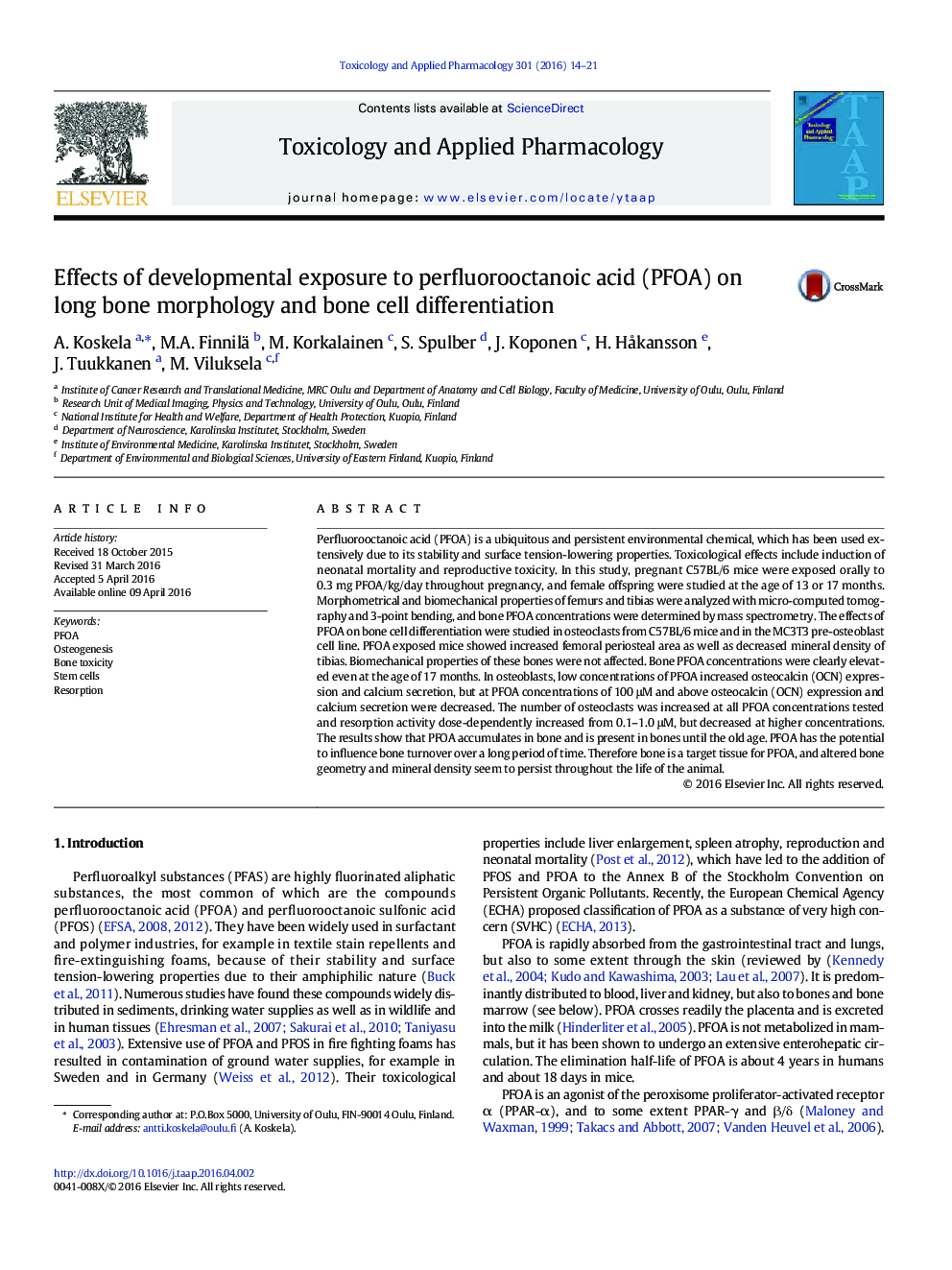| کد مقاله | کد نشریه | سال انتشار | مقاله انگلیسی | نسخه تمام متن |
|---|---|---|---|---|
| 2568064 | 1561161 | 2016 | 8 صفحه PDF | دانلود رایگان |

• Bone is a target tissue for PFOA both in vivo and in vitro.
• Maternal exposure during pregnancy results in PFOA accumulation in bone of the offspring.
• PFOA is present in bones until the old age.
• PFOA causes mild alterations in bone morphometry and decreases bone mineral density.
• Low PFOA concentrations stimulate the resorption activity of osteoclasts.
Perfluorooctanoic acid (PFOA) is a ubiquitous and persistent environmental chemical, which has been used extensively due to its stability and surface tension-lowering properties. Toxicological effects include induction of neonatal mortality and reproductive toxicity. In this study, pregnant C57BL/6 mice were exposed orally to 0.3 mg PFOA/kg/day throughout pregnancy, and female offspring were studied at the age of 13 or 17 months. Morphometrical and biomechanical properties of femurs and tibias were analyzed with micro-computed tomography and 3-point bending, and bone PFOA concentrations were determined by mass spectrometry. The effects of PFOA on bone cell differentiation were studied in osteoclasts from C57BL/6 mice and in the MC3T3 pre-osteoblast cell line. PFOA exposed mice showed increased femoral periosteal area as well as decreased mineral density of tibias. Biomechanical properties of these bones were not affected. Bone PFOA concentrations were clearly elevated even at the age of 17 months. In osteoblasts, low concentrations of PFOA increased osteocalcin (OCN) expression and calcium secretion, but at PFOA concentrations of 100 μM and above osteocalcin (OCN) expression and calcium secretion were decreased. The number of osteoclasts was increased at all PFOA concentrations tested and resorption activity dose-dependently increased from 0.1–1.0 μM, but decreased at higher concentrations. The results show that PFOA accumulates in bone and is present in bones until the old age. PFOA has the potential to influence bone turnover over a long period of time. Therefore bone is a target tissue for PFOA, and altered bone geometry and mineral density seem to persist throughout the life of the animal.
Journal: Toxicology and Applied Pharmacology - Volume 301, 15 June 2016, Pages 14–21